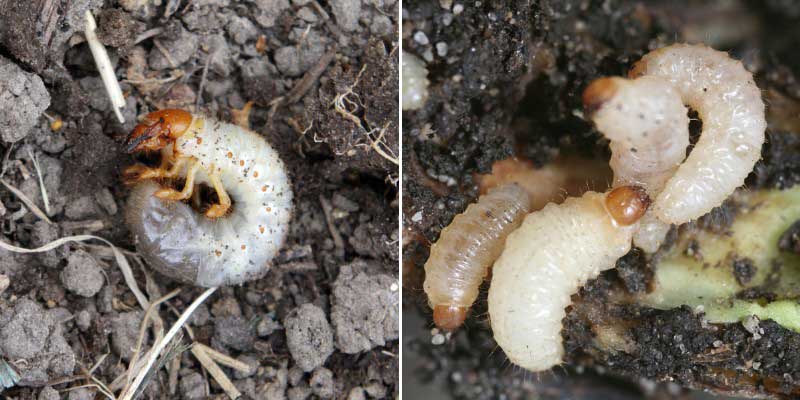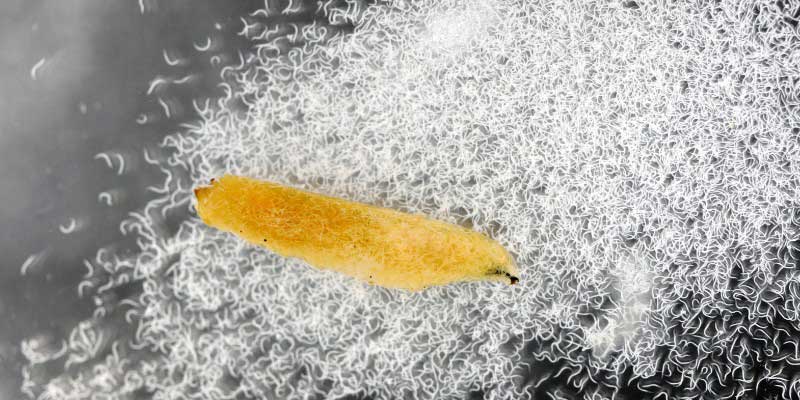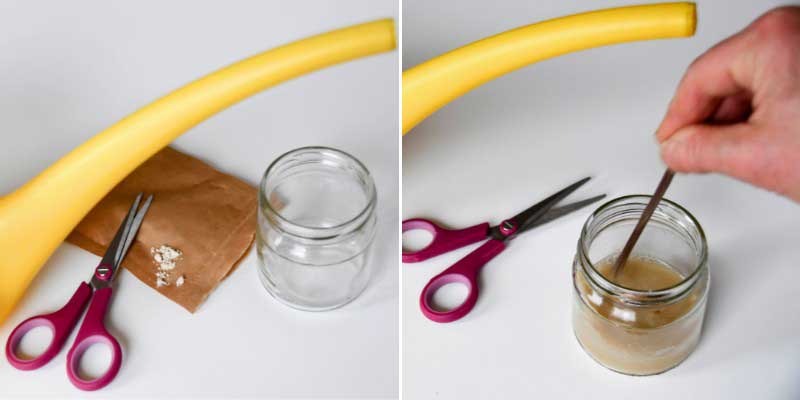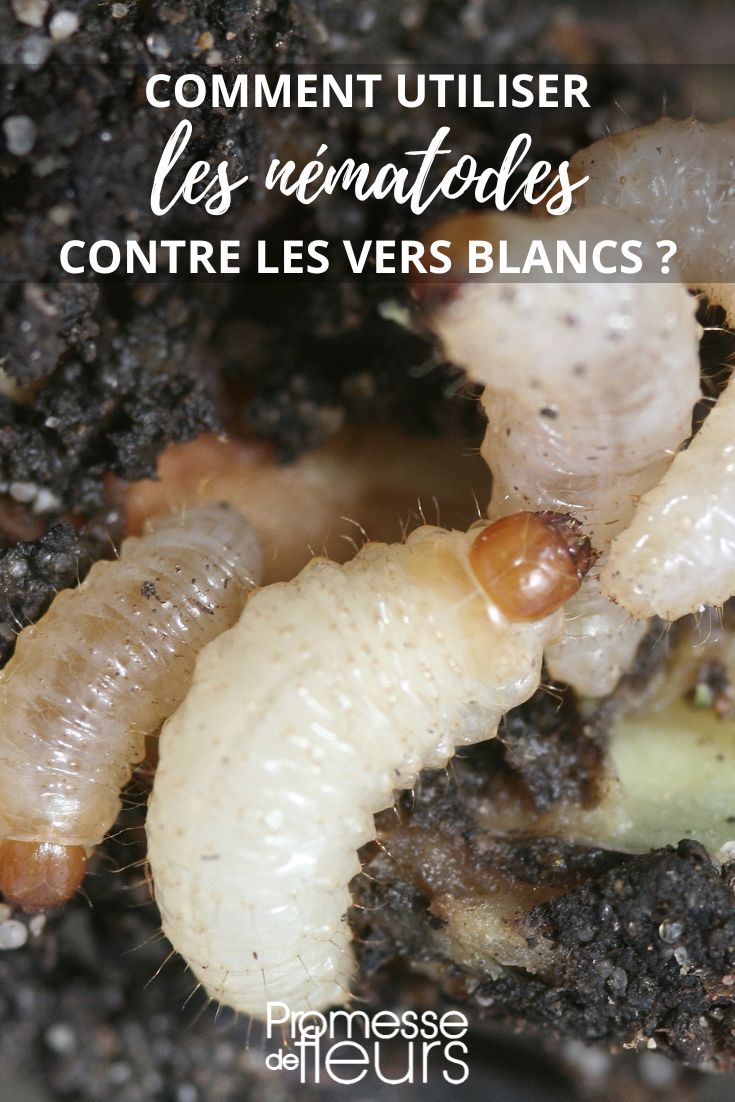White grubs can cause real damage to plants by feeding on their roots. Luckily, natural and effective solutions exist, such as using nematodes, microscopic organisms that parasitise white grubs. Discover all our tips on when and how to use nematodes!
White grubs: what are they?
White grubs are larvae of vine weevils and cockchafers. They are grubs that live in soil and are therefore hard to spot. They feed in particular on roots of ornamental plants, strawberry plants and short grass meadow. White grubs can create yellow, bare patches in short grass meadow.
These two types of white grubs are quite similar and can be confused. Cockchafer larva is cream-coloured, curved, with a brown head and three pairs of long legs. It can measure up to 4 cm at the end of larval stage (after two years). Vine weevil larva is also white, with a shiny brown head. It is smaller, about 1 cm long, and lacks legs. These grubs can also be mistaken for chafer larvae, which are useful in garden. They do not eat living plants but efficiently break down organic matter. They are often found in compost heaps. Chafer larva has a small head and a large abdomen (opposite to cockchafer larvae). It has small legs and mandibles, and bears short hairs that allow it to move on its back.
To distinguish them properly, see our article: Chafer larvae, cockchafer larvae: what differences?

Why use nematodes?
Nematodes are microscopic organisms, invisible to naked eye. Many nematode species exist; some are effective against sciarid flies, wireworms, potato beetles… Against white grubs, Hb nematodes are used: Heterorhabditis bacteriophora. They parasitise white grubs and are used to control them naturally and ecologically. They enter bodies of grub larvae and kill them by feeding on their tissues. Larvae then turn brown. Nematodes are very effective against white grubs because they can actively seek their hosts in soil. They have advantage of being selective, attacking only white grubs, without harming other insects and living organisms. This is a curative solution, allowing treatment once presence of white grubs is observed, and represents an excellent ecological alternative to chemical pesticidal products, which can be harmful to environment and human health.
These nematodes are also effective against lily of the valley moth (Korscheltellus lupulinus), which attacks lily of the valley, strawberry plants, raspberry plants and hop.
See our advice sheet: "Biological control: beneficial nematodes — how to use them properly?"

When to apply nematodes?
Best period to apply nematodes is summer, between late July and September, because at that time larvae are in first stage of life, still small and vulnerable. Nematodes will therefore be particularly effective. However, a second application can be made the following spring, between mid‑May and mid‑June.
Application should be done when soil temperature is between 14 and 25 °C. Nematodes are sensitive to extreme temperatures, so avoid using them during very hot weather or frost. Application can be made outdoors, but also for crops under glasshouse or tunnel. Ideal is to apply nematodes when soil is moist, after rain, or to water soil just before, because they need water to move and survive. Soil should then be kept moist for three weeks after application. It is also preferable to apply nematodes early morning or late afternoon, sheltered from direct sun.
How to do it?
Nematodes can be used to protect plants in open ground, outdoors, but also for crops under glasshouse or tunnel. They are permitted in organic agriculture. Five million nematodes treat 10 m².
Nematodes are supplied in sachets, mixed with clay powder to ease application. Simply spread them at plant base, diluted in watering water. Before use, store nematodes in refrigerator, at temperature of 4 to 12 °C. Above all, avoid exposing nematodes to sun, as they are particularly sensitive to UV.
Do not use any chemical treatment in garden one week before application and up to one month after. Avoid especially fungicidal and nematicidal products.
To apply nematodes, use a watering can or sprayer. If using sprayer, ensure nozzles have diameter greater than 0.8 mm and do not exceed pressure of 20 bar.
- Moisten soil before application. This will increase effectiveness by helping nematodes disperse through soil.
- Open sachet and dilute in small volume of water, then mix well. Preferably dilute nematodes in rainwater. If using tap water, let it stand for 24 hours to allow chlorine to dissipate.
- Fill a watering can with 10 L of water.
- Pour nematodes into watering can, then mix well for at least 2 minutes so they are evenly distributed in water.
- Then water base of plants with watering‑can rose. Do it immediately, preparation keeps for no more than one hour. Important to cover soil evenly and avoid untreated patches.

After application, keep soil moist for following three weeks to help nematodes move and survive in soil.
Repeat nematode application every 4 to 6 weeks to maintain sufficient nematode population in soil and control white grubs effectively.
































Comments